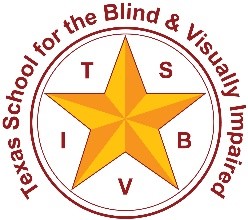A Basis for a Common Language
Question: How do we co-create language with a child who is deafblind?
Interactions through a Common Language
Most of the time, when we think of a conversation, we think of two people talking, taking turns, and exchanging ideas in a common language. Maybe that language is English or Spanish or Italian. Along with this spoken language there is another dialogue that is happening in parallel; a visual dialogue of non-verbal language; gestures, facial expression, and body language. Culture would also influence this conversation. Culture created from the ideas and concepts that we derive from the people and artifacts that are around us, that influence our perception of the world that we are immediately part of.
When we visualize the ideal conversation, it looks very easy. It has an uninterrupted flow, where both people have equal time to both speak and listen – symmetry. There is a back and forth exchange of ideas and dialogue – serve and return. Both parties are focused and interested in what the other person is saying. There is no misunderstanding. There is a shared topic. There is a commonly understood language.
What happens when there is no basis for a common language? When there is no concept of I talk, you listen – You talk, I listen. As seeing hearing people, we have prior visual and auditory experience with conversations. We are able to visualize what the ideal conversation might look like in our mind. We can imagine what the words might sound like – we can hear the language people are speaking. Is it English? Is it a foreign language, whose words we don’t understand but can still recognize it as spoken language because we have the concepts of what spoken language and words are?
Deafblind Interaction Menu
Cultural Language of Congenitally Deafblind
For a person who is deafblind, their experience of the world might be very different from a seeing-hearing person’s or even a person who is blind or deaf only . If they are congenitally deafblind, their experience of language might be even further from the seeing-hearing person’s ideas of what that means. If one’s experience of the world is largely from a tactile-bodily perspective, language is also going to emanate from a tactile-bodily perspective.
There Are No Experts
We learn language from the people that come before us. Language is passed on from people who are expert in a form that already exists, and in most cases, is shared by many others. For the person who is congenitally deafblind, whose language might emanate from a tactile-bodily experience, their language is not transferred by the person who came before them. They have no expert in tactile language because theirs is a language that does not exist on a formal, widely used level. How then do they learn to communicate? How does language become common? How can we seeing hearing people become expert in a language that does not exist?

“I talk you listen…you talk I listen.”
Barbara Miles
We begin “teaching” communication to the child who is deafblind by becoming skillful conversational partners. The child learns to communicate by being treated as a person who can already communicate. We teach conversation by having conversation.
Remarkable Conversations: A guide to developing meaningful communication with children and young adults who are deafblind
Barbara Miles & Marianne Riggio
Paul Hart: The Fantastic World of Touch
Description: Paul Hart discusses The Fantastic World of Touch

